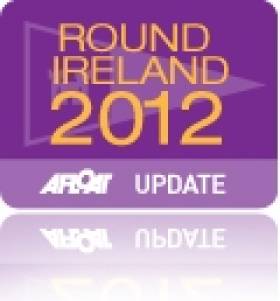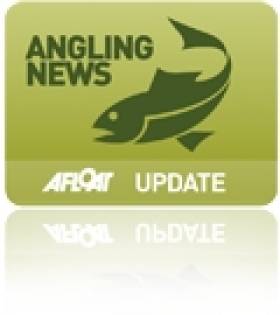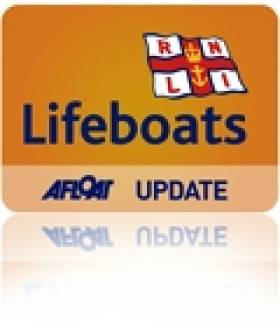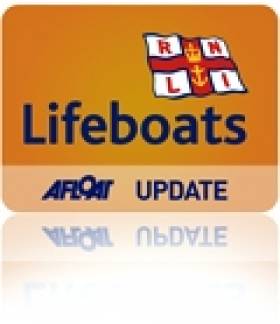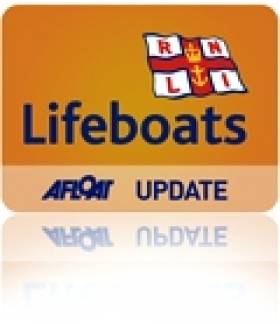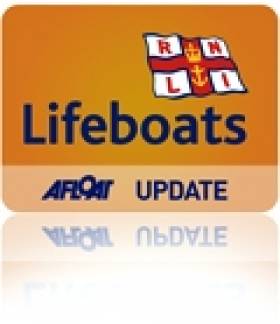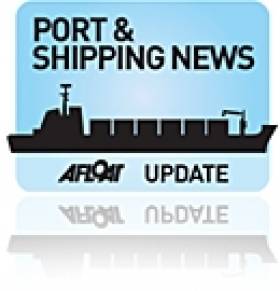Displaying items by tag: Wicklow
Tips for Round Ireland Yacht Race Success by a Double Winner
Cork Harbour's Dave Hennessy is getting ready for his seventh Round Ireland race in two weeks time. The two times winner of the 704-mile offshore race in the vintage Granada 38 Cavatina gives some advice on what's involved in a successful circuit of Ireland.
Well we are off again on our seventh Round Ireland Yacht Race, this time with the very grateful sponsorship of CH Marine on board. We were asked for some ideas on tactics for the race, as we have been lucky enough to win it twice in the past.
Tactics
I think tactics play a small part in this race.The choice of boat would be the first consideration. It is a 704–mile offshore race around Ireland. The boat needs to be able to sail to her handicap over a wide range of conditions over a six day period by night and day. Cavatina is a 1979 design, weighs nine tons, has a long, sharp overhanging bow, a narrow enough stern, and like many heavy displacement boats, can keep moving in light conditions as well as coming into her own in heavy winds. In this year's fleet we seem very much the tortoise among the hares but we have been there before! The overall Fastnet winner in 2005 was a French" tortoise" beating us into second place overall by 22 minutes.
Seamanship
The next 'tactical' issue is crew. We are 12 years campaigning Cavatina offshore and have almost the same crew lining out every year. Our average age would be in late 50s but the group bring a range of skills to the boat – experience, stamina, good humour, sailing ability, mechanical, electrical skills.

The 'good humoured' crew of Cavatina go for their seventh Round Ireland race later this month. Photo: Bob Bateman
We managed to finish the '07 Fastnet where 240 of the 300 entrants were forced to retire.This is fair testimony to the crew's seamanship. I recall a bad night a few years ago approaching Inistrahull off the north coast under spinnaker with a rising gale forecast. We needed to drop the kite, gybe to avoid Scotland, but when we went to ease the halyard we found it had jumped the sheave and jammed solidly in the block at the masthead.
There was no way under the conditions to go up the mast. There was talk of shooting it with a flare even, but it was John Murphy who had the idea to ease the sheets as the boat slid down a wave, causing the kite to rise and the halyard to sit right on the sheave once again.The plan worked, kite came down for a few hours, went up again meaning we reached the fair tide at Rathlin and went on to win that race overall!
Sail Wardrobe
Another "tactical" issue to plan for is your sail wardrobe.You need to look at your boat's strengths and weaknesses in order to sail at your best in all conditions. Eric Lisson is shrewd in this regard and saw that the point of sailing from being close hauled to when you can carry a kite on a tight reach was critical for us. With Des McWilliam they came up with a Code Zero which we are only supposed to carry up to 15-knots apparent. This sail has won races for us. We also have a big overlapping furling Genoa.This means we can easily "change gear" when other crews are dragging headsails on deck or putting off marginal calls. Our main is quite small and is only reefed when it really blows.This again is a setup I feel lends itself well to offshore racing.
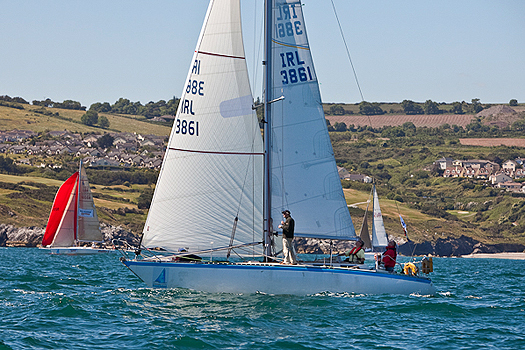
Cavatina passes along the Wicklow coast at the start of the 2010 Round Ireland. Photo: Bob Bateman
Victualling
Yet another issue to deal with at the planning stage is food.The crew need to be fed well to sail at their best over that time length. We pre-cook and freeze 6 main meals which are eaten in evening.We cook an FIB (full Irish breakfast) in the morning, usually served in sandwiches. Proper clothing is also essential. Thanks again CH Marine. We finished in Wicklow one year with two crew definitely hypothermic who would have been no good to us if there was another 50 miles in the race!
Lady Luck
Probably the most honest thing i can say re on the water tactics is that it is mostly luck.There are 4 tidal gates to negotiate. You sprint to Tuskar to find that gate open or closed. You slog to windward to Fastnet along the south coast, beating into the bays, risking being becalmed, or you take a chance on a long starboard tack to the south to avoid light winds.You push to reach the North Channel between Rathlin and Scotland with the gate open.This is the most critical piece of luck. We made it last year only to be completely becalmed towards Belfast Lough managing 6 miles in 10 hours! We didn't win that race! The final gate is approaching Wicklow itself. Many is the boat has come to a halt in view of the town lights, trying to sail against five knot tides in light night airs.
So if it is really down to luck why do so many do it? Yes it is a challenge heading off south past Wicklow Head into the "unknown" but for me it is the indescribable sense of achievement in "completing the circle". DO IT!
Good luck to crew of Eric Lisson, Ian Hickey, Lennie Donnery, Sean Hanley, Kelly and Dave Hennessy!
Bumper Catch for Media at Annamoe
#ANGLING - Journalists were angling for a different kind of story at Annamoe Trout Fisheries recently as they competed for the Dublin Crystal Perpetual Trophy, The Irish Times reports.
The eighth annual event at the foothills of the Wicklow Mountains brought together 17 writers from across the Irish media landscape for a friendly test of their angling skills.
John Buckley of Total Flyfisher magazine, who was the first to strike gold at the end of the trout rainbow in last year's event, quickly zoomed ahead of the pack with a total of 21 catches.
And this year's first-timers - which included Brian Cooke of Irish Angler's Digest and celebrity chef Chris Sandford - also set impressive totals.
The Irish Times has more on the story HERE.
Hangin' Around off Wicklow
#LIFEBOAT – Wicklow Lifeboat took part in a joint training exercise with an Air Corp helicopter in Wicklow bay on Saturday morning. The Air Corp AW139 helicopter crew landed on the Castle near the lifeboat Station at Wicklow harbour for a briefing prior to the exercise. During the exercise, three of the lifeboat crew were winched into the helicopter using various winch methods.
Actress Saoirse Ronan Calls to Wicklow Lifeboat Station
#SAOIRSE RONAN – Volunteer lifeboat crew with Wicklow RNLI received a surprise visitor during their navigation course this morning (Monday 23 January 2012). Well known actress Saoirse Ronan dropped in to say hello while filming nearby. The actress was filming scenes for director Neil Jordan's new film 'Byzantium' at Wicklow harbour.

The Hollywood actress makes her slipway debut
Tommy Dover, Wicklow RNLI volunteer said, " Saoirse kindly agreed to pose with some of the lifeboat crew from Wicklow RNLI and hear all about the work of the charity. We were delighted to welcome her and if she ever wants to sign up as lifeboat crew, she is more than welcome."
The RNLI is holding their SOS fundraising day this Friday with events happening all around the country. Funds raised are going towards purchasing new lifejackets for the volunteer lifeboat crews. The target is €160,000.
Wicklow RNLI lifeboat crew are no strangers to famous actors visiting the lifeboat station. Both Brendan Gleeson and Don Cheadle called into the lifeboat station while they were filming The Guard nearby.
Bottlenose Dolphin Pod Seen Again Off Dublin Coast
#MARINE WILDLIFE - They were thought to have disappeared from the east coast in October after delighting wildlife enthusiasts in Dublin and Wicklow.
But concerns that one of the group had died were swept side when the pod of three bottlenose dolphins was once again spotted off Killiney recently.
The Wicklow People reports that the two adults and one juvenile reappeared almost two weeks ago, and have been seen daily "putting on great displays of leaping, breaching, and tail slapping".
Fears were that tragedy had befallen the group when two bottlenoses were seen off Skerries and Balbriggan in late October, and a juvenile was found dead in Portmarnock shortly after.
As previously reported on Afloat.ie, some 200 sightings of the dolphins between Dalkey Island and Wicklow town in recent months were validated by the Irish Whale and Dolphin Group (IWDG).
According to the IWDG, evidence suggests that the pod is now resident off the east coast.
The Wicklow People has more on the story HERE.
Sean Flood, Wicklow Sailing Club
#WICKLOW – Wicklow Sailing Club has been stunned by the sudden and tragic death of its former commodore Sean Flood.
Sean's funeral took place yesterday at 11 a.m. in St. Patrick's Church followed by burial afterwards in Rathnew Cemetery.
According to local reports he was last seen on Friday afternoon in the vicinity of Wicklow Harbour. His body was recovered later by divers on Saturday.
Sean, who was in his late fifties, was a prominent Wicklow businessman. He was a long-time member of Wicklow Sailing Club, where he previously held the titles of commodore and vice-commodore.
Flags at the Sailing Club flew at half mast in his honour.
The Wicklow People has more on this sad news here.
Round Ireland Yacht Race 2012 Takes Shape
#SAILING–Wicklow Sailing Club's Round Ireland Yacht Race departs from Wicklow Bay at 12 noon on Sunday 24th June 2012, leaving Ireland and all its islands to starboard.
2012 mark's the 32nd anniversary of Ireland's premier off-shore sailing event, organised by Wicklow Sailing Club in association with Royal Ocean Racing Club (RORC).
It is the longest race in the Royal Ocean Racing Club calendar, comparable to similar Offshore races such as the Fastnet, Malta Middle Sea, Sydney-Hobart and China Sea races.
The first race took place in 1980 with only thirteen boats. Since then, held biennially, the fleet has grown steadily, and up to 60 yachts have competed in some past editions of the race.
The backbone for the 2008 race was Tonnerre de Breskens III, owned by Dutchman Piet Vroon. The crew arrived in Wicklow with a brace of RORC victories, leading RORC's offshore table, and went into the race as favourites. The first twist in Tonnerre's plot came before the starter's gun, when Vroon ended up in hospital, from where he would follow the race as his crew sailed on without him.
However, that would be the only bump in their road. Tonnerre led from start to finish, both on the water and on handicap. Vroon's crew brought home the trophy for their ailing skipper in the race's happy ending.
Sailing around Ireland poses many challenges for boats and crew, with open ocean on the south and west coasts, tidal challenges on north and east coasts apart from all the off lying rocks and sandbanks to keep navigators on their toes and not forgetting the vagaries of the Atlantic weather systems.
This is very much a sailors race but armchair spectators can follow the race on their computers, thanks to our modern race tracker technology.
A Round Ireland Sail Fest (Thur 21 - Sun 24 June) will complement the race preparations and add a welcome level of fun and entertainment for all coming down to Wicklow for the Race start.
ROUND IRELAND YACHT RACE 2012 on SUNDAY 24TH JUNE
NOTICE OF RACE
ORGANISATION
The Race is organised by Wicklow Sailing Club in association with the Royal Ocean Racing Club.
CONDITIONS The race will be sailed under the Racing Rules of Sailing 2009-2012, the ISAF Offshore Special Regulations, the Irish Sailing Association (ISA) and RORC Prescriptions and amendments and the additions detailed below:
1. This Notice of Race, the Entry Form and the Sailing Instructions.
2. The Race is ISAF Offshore Special Regulations Category 2.
3. IRC Rules Parts A, B, & C – 2012 Rules.
In the event of conflict the Sailing Instructions shall prevail.
START The start will be at Wicklow on Sunday, 24th June 2012.
COURSE Leave Ireland and all its islands excluding Rockall to starboard. The distance is approximately 704 nm.
ENTRIES To: Wicklow Sailing Club, C/o. Dennis Noonan, "Dunmore", Sea Road, Newcastle, Co. Wicklow. The closing date for entries is 8th June 2012. Exceptionally late entries may be accepted, for which there will be a late entry fee. Entries will be from IRC (Endorsed) rated yachts of LOA 9.15m/30 feet and over, with a minimum SSS of 28 or STIX of 32 combined with an AVS minimum of 130-0.002 x M (where M is minimum sailing weight in kg). STIX and AVS data is required for boats with a series date of 1995 and later.
ENTRY FEE LOA: 30-39.9 feet €400 40-49.9 feet €450 50-59.9 feet €500 60 feet and over €550.
LATE ENTRY Late entries will be subject to the relevant fee above +50%. No entry will be accepted after Thursday, 22nd June 2012.
CANCELLATION POLICY Cancellations can be accepted either:
(1) before the closing date, when a refund minus €50 may be claimed or
(2) between the closing date and the start, when 50% of the fee may be claimed.
ENTRY The Race Committee reserves the right to decline an entry.
ENTRY LIMIT The number of starters shall not exceed 75.
CLASSES Racing will take place under IRC. Classes will be allocated according to the number and type of entry. Classes for classic and one design yachts will be subject to the number of entries. Yachts may enter as a team, but RRS Appendix D, Team Racing Rules, will not apply. Details will be provided on application.
Classes will be as follows:
IRC Class CK – 0.850 and greater
IRC Class Z - 1.276 and greater Class 5 – Cruisers, Hull factor 7.5 or less
IRC Class 1 - 1.275 – 1.101 Class 6 – Classics Class (pre 1987)
IRC Class 2 - 1.100 – 1.051 Class 7 – Sigma 38 to Class Rules
IRC Class 3 - 1.050 – 1.007 Class 8 – Two-handed Class
IRC Class 4 – 1.006 - 0.850 Class 9 – TBA
The Race Committee reserves the right to alter the rules and conditions of the race at any time. Changes will be posted on the WSC website at www.wicklowsailingclub.com. Yachts whose entries have been accepted will be advised directly.
EXPERIENCE QUALIFICATION
The Round Ireland Yacht Race is not a race for novices. Every crew member must have experience of sailing a yacht offshore and be prepared to encounter heavy weather. Competitors may be required to provide evidence of offshore experience.
The skipper and at least half the crew must have completed, in the yacht in which they will race the Round Ireland Race, in the 13 months preceding the start, either:-
1. 300 miles of offshore racing * or
2. Non-stop passage of at least 300 miles.
3. Other qualifications similar to 2. above to be proposed to and agreed by WSC/RORC by 31st May 2012.
* To qualify as offshore racing a race must be at least 75 miles duration and include at least one night at sea.
TRAINING It is the skipper's responsibility to ensure that the following criteria are met and that a certificate or letter of attendance from an establishment recognised by the ISA/RORC should be provided on completion of the following:
1. At least 30% of the crew, including the Skipper, shall have undertaken training to Section 6, (Appendix G) of the ISAF Offshore Special Regulations.
2. In the case of two-handed entries, both crew members must complete training to Section 6, (Appendix G) of the ISAF Offshore Special Regulations.
3. In addition at least one member of the crew shall hold a current Senior First Aid Certificate or equivalent (in accordance with OSR 6.05.2) and should be familiar with the management of medical emergencies that may occur at sea, including hypothermia, and radio communications operations for obtaining medical advice by radio.
4. The above training must have taken place after January 2007. Copies of these certificates should be lodged with WSC prior to the start of the race.
CREW LIST A full crew list with names, addresses and telephone numbers of competitors and their next of kin to be lodged with the Race Office on Registration at Wicklow Sailing Club.
INSPECTIONS Yachts shall assemble at Wicklow Harbour no later than 1200 hours on Friday, 22nd June 2012 for Special Regulations inspections. Deep draught yachts may be inspected at Dun Laoghaire, by agreement with the race organisers.
RORC SPECIAL REGULATIONS CHECK-LIST
Each entrant must complete an ISAF Offshore Special Regulations Check List. The completed Check List must be submitted to Wicklow Sailing Club prior to the start of the race and a copy must also be retained onboard the yacht.
ADVERTISING Advertising will be acceptable under conditions to be provided on application. Yachts may carry advertising according to the Racing Rules of Sailing and their class or rating authority. Yachts will be required to fly a race flag and may be required to apply a race sticker to each side of the hull.
TRACKING It will be mandatory for yachts to carry a Tracker Unit for the duration of the race. A refundable deposit, which may be set against a credit card, may be required.
AIS TRANSPONDER All yachts must be equipped with an operational AIS Transponder, which must be switched on and transmitting and receiving for the entire duration of the race.
TIDES Wicklow Harbour, Sunday 24th June 2012. Times are local and are approximate.
HW - 1432hrs
RATING CERTIFICATES
All competitors must apply to the RORC Rating Office as early as possible prior to the race, in order to obtain their current Endorsed Certificates in good time. Please note, STIX and AVS data is required for boats with a series date of 1995 and later. The cut-off date for amended Rating Certificates shall be Thursday the 21st June 2012.
PUBLICITY Entrants should include, with their entry, two recent photographs of the yacht for the programme and for publicity purposes.
Wicklow Lifeboat Assists Fishing Vessel after Collision with Tanker
The alarm was raised after the collision took place about 20 miles off the Welsh Coast in the early hours of Monday morning. A volunteer crew from Holyhead RNLI lifeboat Station put to sea along with Wicklow lifeboat.The 3 crew of the beam trawler were uninjured in the incident, but the vessel sustained some damage to fishing gear, but no damage below the waterline. The tanker was able to resume her passage and no damage or pollution was reported.
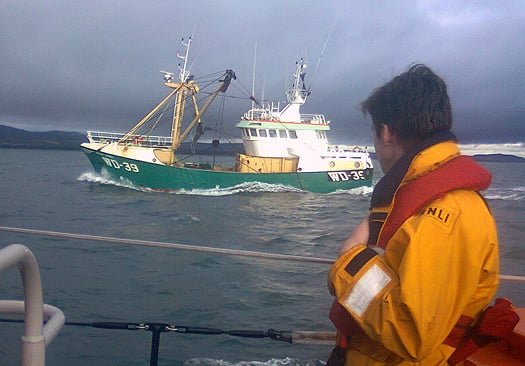
Wicklow RNLI lifeboat escorting the fishing vessel. Photo: RNLI/ Wicklow
The trawler was able to motor back towards the Irish Coast under escort by Holyhead lifeboat. At 07.33hrs Wicklow lifeboat arrived on scene. Holyhead lifeboat was then stood down and returned to station.
Wicklow lifeboat escorted the Beam trawler on the journey back to Wicklow harbour and was safely secured alongside the East pier by 10.30am.
The 3 crew were said to be shaken but uninjured after their ordeal.
Wicklow Lifeboat Tows Yacht to Safety After Rope Fouls Prop
The yacht with two persons onboard was taking part in a race along the Wicklow coast when the mast and rigging was damaged, the skipper attempted to use the engine but a rope had fouled the propeller leaving the vessel drifting helplessly.

Wicklow lifeboat tows the yacht to safety last night
The lifeboat crew under the command of Coxswain Ciaran Doyle located the stricken yacht about one mile east of the North Arklow buoy and was alongside less than 30 minutes after launching. Once a towline had been rigged by the lifeboat crew the casualty was taken under tow to Wicklow harbour. The yacht was secured alongside the south quay at 7pm and the two sailors were landed safely ashore. This was the second incident the volunteer crew responded to over the weekend.
Cargoship Gets into Scrap in Wicklow
The cargoship Arklow Rebel (2,999 gross tonnes) which loaded scrap metal in Wicklow Port today, is believed to be the largest Arklow Shipping Ltd vessel to dock in the east coast port, writes Jehan Ashmore.
The 7-year old Dutch-built vessel arrived in ballast from Warrenpoint Co. Down around 01.30hrs to berth alongside the town's south quays at the Packet Quay.
Throughout this afternoon there was a steady stream of lorries laden with the scrap-metal which was loaded into the ship's hull by a quayside grabber. Upon completion of loading, the distinctive green hulled Arklow Rebel departed this evening bound for Liverpool.
She is one of nine 'R'class series of ships built by the Dutch shipyard of Barkmeijer Stroobos B.V. and has the following dimensions (90m length X 12m breath X 4m draft). For further vessel characteristics click HERE.
The Irish-flagged vessel is registered at the neighbouring port of Arklow to the south and is part of a fleet of over 40 ships managed by the Tyrrell family.
During the boom years Wicklow port was particularly busy with Scandinavian imports of bundled packaged timber and plasterboard for the construction industry.
The tidal port at the mouth of the River Leitrim also specialises in paper, lead, steel and dry bulk cargoes, principally coal in addition to other general and heavy-lift project cargoes.
For many years the issue of road traffic congestion was finally solved when the Wicklow Port Access and Town Relief Road Scheme was completed in April of last year.
The port access road (1.6km) runs between the Rathnew Road to The Murrough via a bridge that crosses the Broadlough Estuary and over the Dublin-Rosslare railway line.
- Wicklow
- Arklow Shipping Ltd
- Wicklow harbour
- Liverpool
- ASL
- Wicklow Port
- Port of Wicklow
- Wicklow Port Access and Town Relief Scheme
- Arklow Rebel
- Tyrrell
- ScrapMetal
- Port and Shipping News
- Packet Quay Wicklow
- Wicklow Port Company
- Broadlough Estuary
- River Leitrim
- The Murrough
- DublinRosslare railway line
- Barkmeijer Stoobos B.V.


























